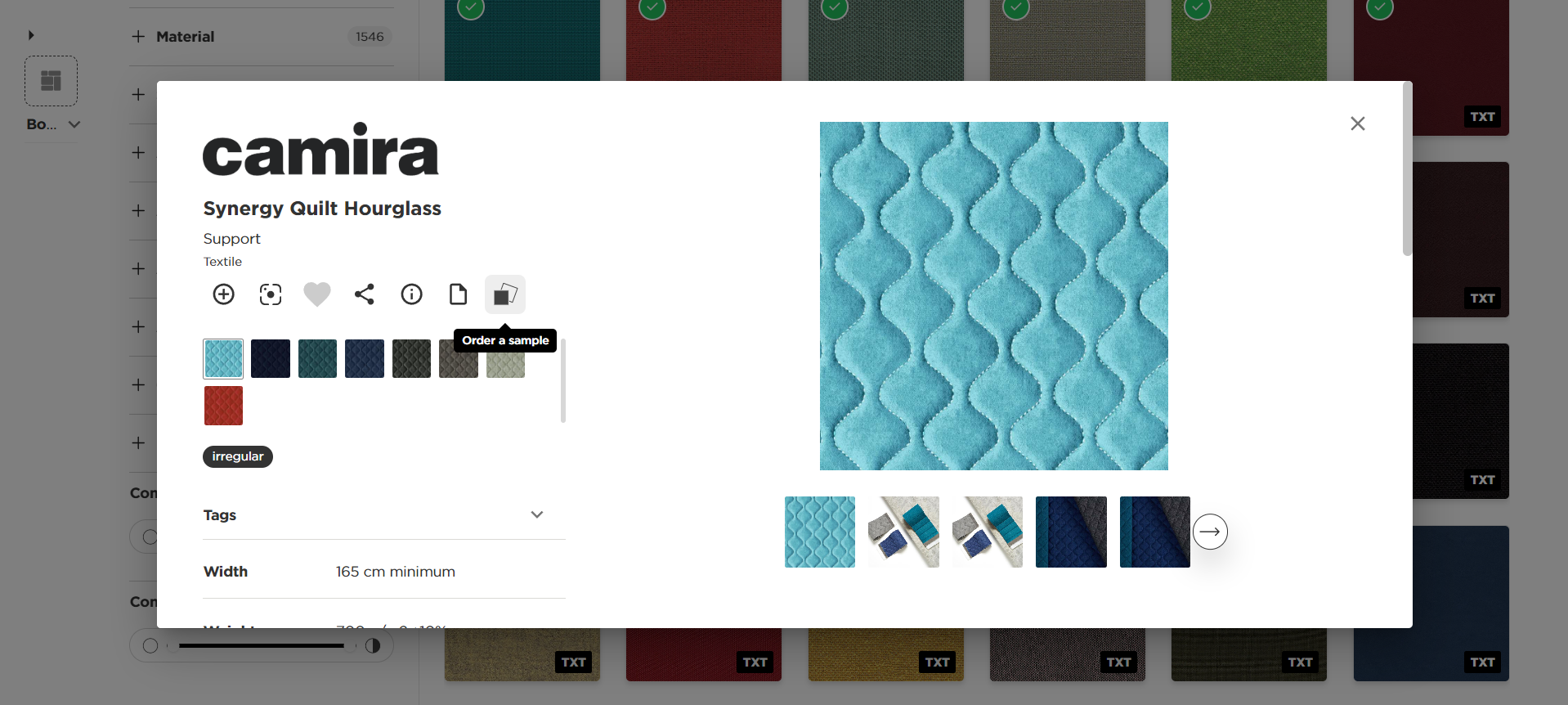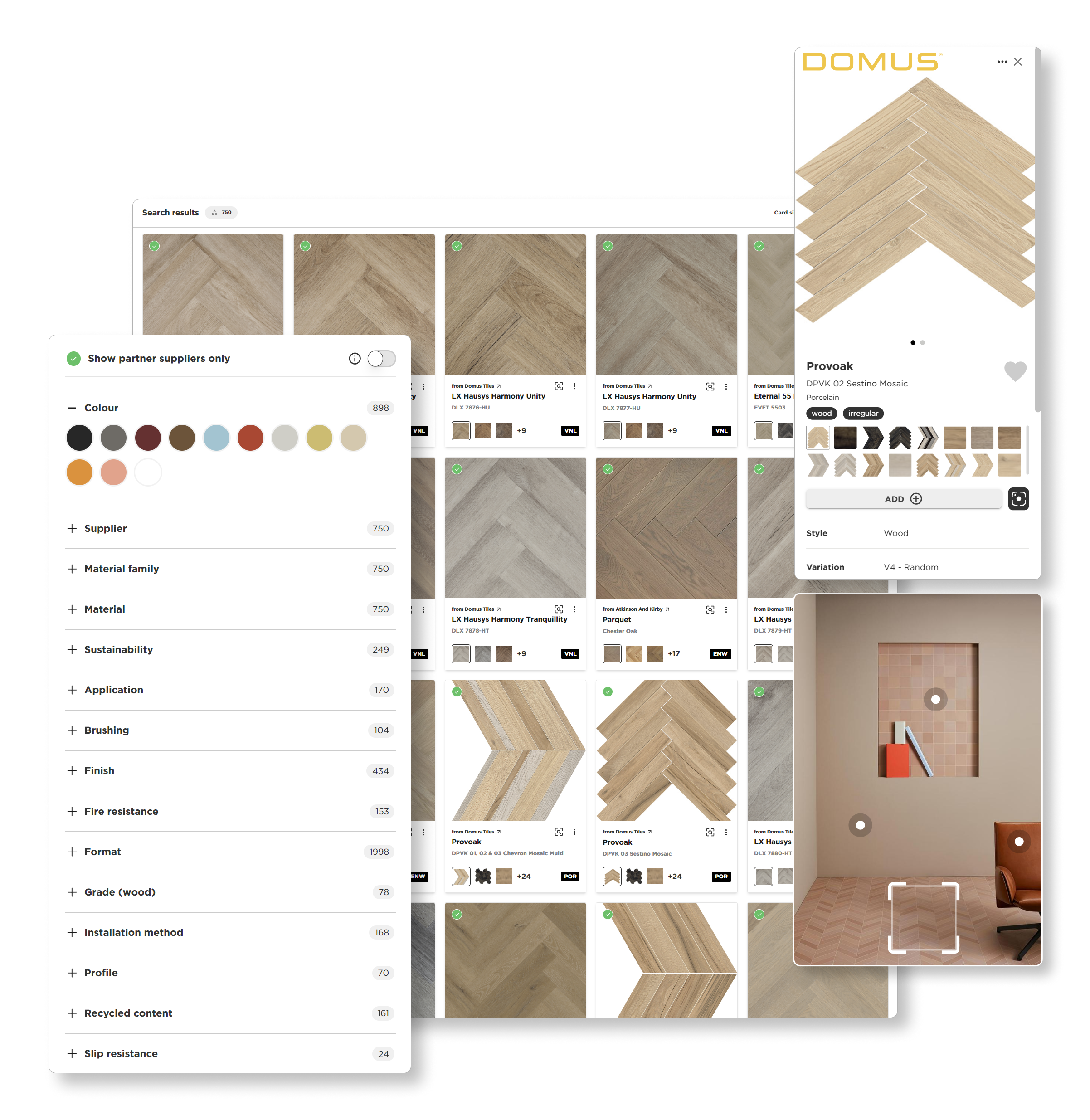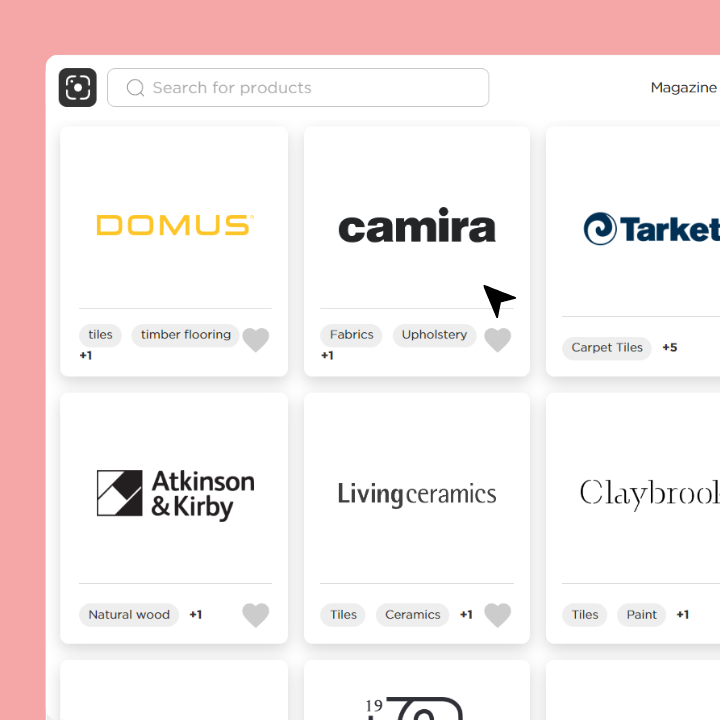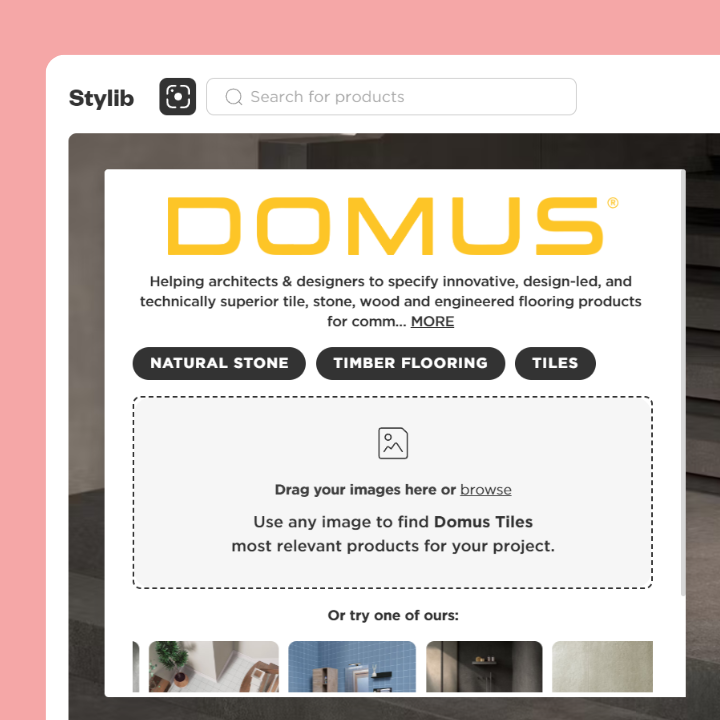
Soofia Fatima
Marketing executive @Stylib
In today’s fast-paced design and construction workflows, architects and designers don’t just need beautiful products; they need to find them fast.
But product discovery isn’t always easy. Information is often scattered across PDFs, outdated websites, or locked behind login portals. And when you’re looking for materials with specific performance requirements, certifications, or aesthetics, the process can become tedious quickly.
This is where a searchable materials database becomes essential.
What is a materials database?
A materials database is a centralised, digital platform that brings together detailed information about architectural and interior products from multiple suppliers. Users can browse, filter, and search across thousands of materials by technical specs, certifications, colours, finishes, applications, and even visual similarity.
Think of it as a searchable, standardised library built specifically for the way design professionals work.
What does it do?
1. Accelerates product discovery
With powerful filters and advanced search, users can instantly narrow down materials that fit their needs, whether they’re looking for acoustic wall panels with FSC certification or stone-look porcelain tiles under 10mm thick. No need to open dozens of tabs or guess which supplier might have the right product.
2. Brings multiple suppliers into one place
Rather than jumping from one manufacturer’s site to another, a database offers a single, unified interface. Designers and specifiers can compare options side by side, explore alternatives, and view product details without hopping between platforms.
3. Structures product information for easy search
Behind the scenes, each product entry is tagged with consistent attributes like composition, usage, finish, dimensions, and sustainability criteria, so that results aren’t just fast, they’re relevant.

4. Supports visual and semantic search
More advanced platforms don’t just use filters; they allow users to search by image or by natural-language queries like “outdoor wood decking with anti-slip rating”. This makes it easier to work from inspiration or informal requirements.
5. Streamlines specification and collaboration
Designers can create shortlists, moodboards, request information, order samples or share selections with teammates or clients directly from the platform. This keeps everyone aligned and cuts down on back-and-forth emails.

6. Gives visibility to the right products
For suppliers, being listed in a searchable database ensures that their products show up at the right moment, when specifiers are actively looking and ready to decide.
One platform built for this
If you’re a supplier looking to reach more architects, or a designer tired of scattered sources, a well-structured materials database can bridge the gap.
Database by Stylib is a searchable platform featuring architectural materials from 100+ suppliers, powered by advanced filters, semantic search, and visual lookup. It helps design professionals find the right products faster, and helps suppliers get discovered by the right clients.
👉 Explore Stylib’s Database

The Database lets architects and designers explore products from over 100 suppliers in one place, using AI tools to find exactly what they need. It eliminates the hassle of navigating dozens of websites by offering a unified, intelligent search experience built around real project workflows.

Each brand featured in the Database has its own dedicated microsite, a clean, fully searchable space where their catalogue is displayed with complete specifications, assets, and filters. It’s more than a listing; it’s a branded, spec-ready experience that encourages discovery and selection.

All products in the Database are structured for specification, with clear attributes and updated certifications. Architects can shortlist items, create moodboards, request samples or more information, and share product links- all in one streamlined interface that supports fast, informed decisions.

